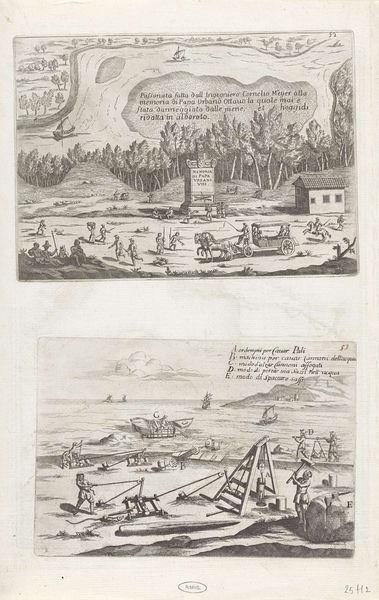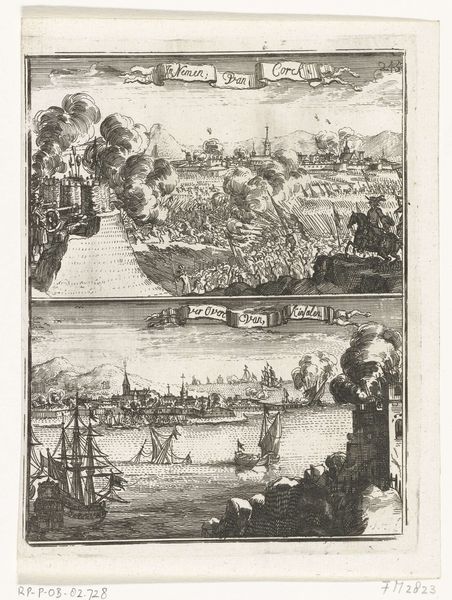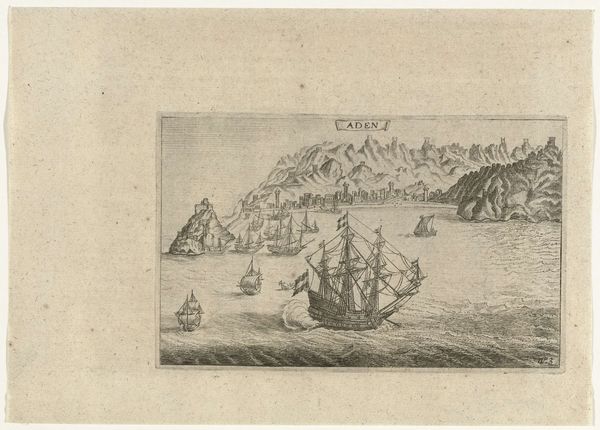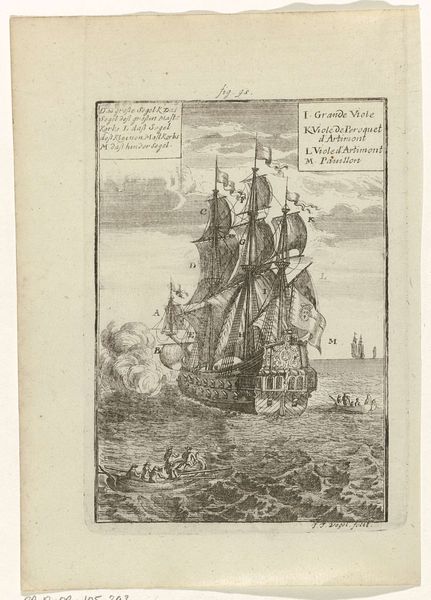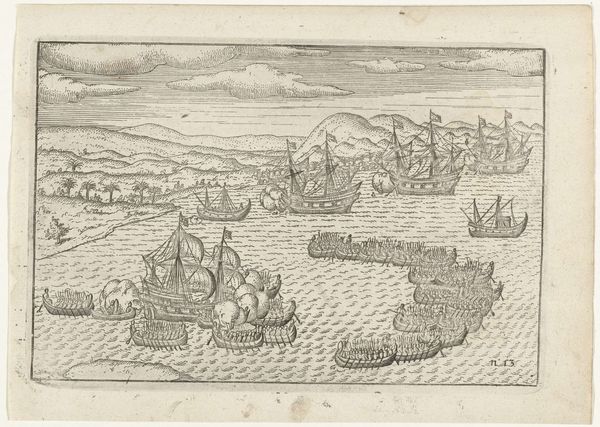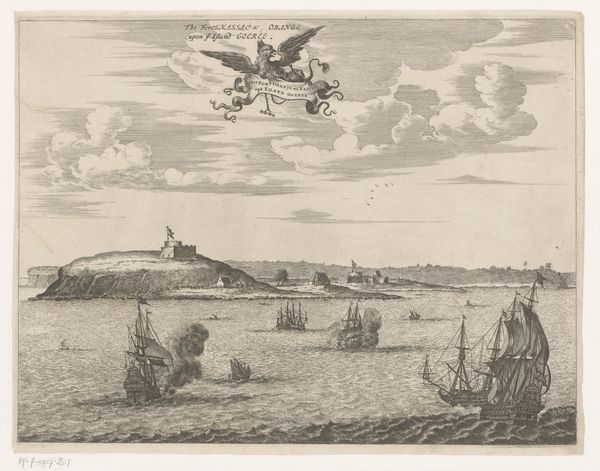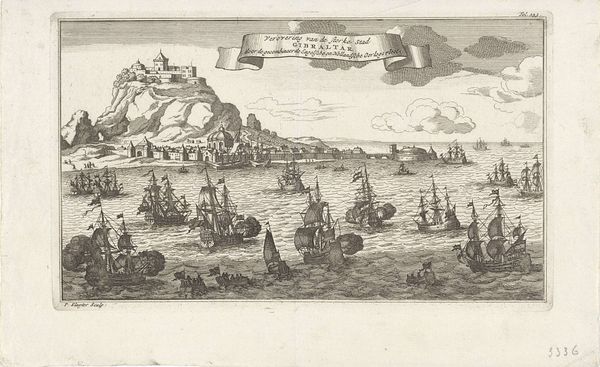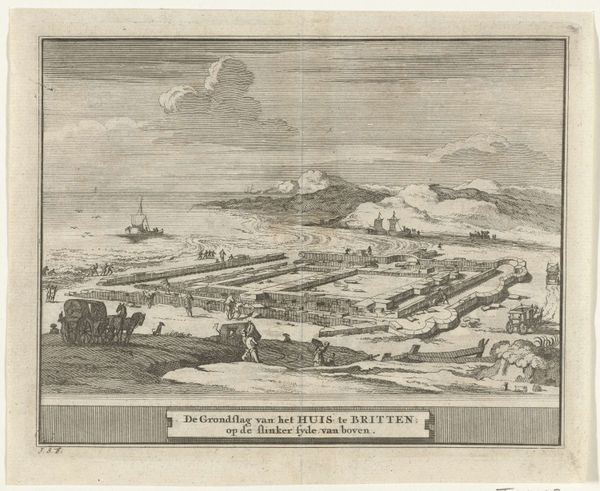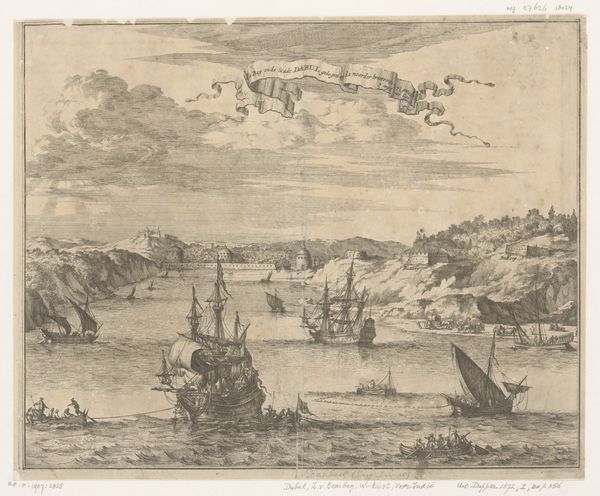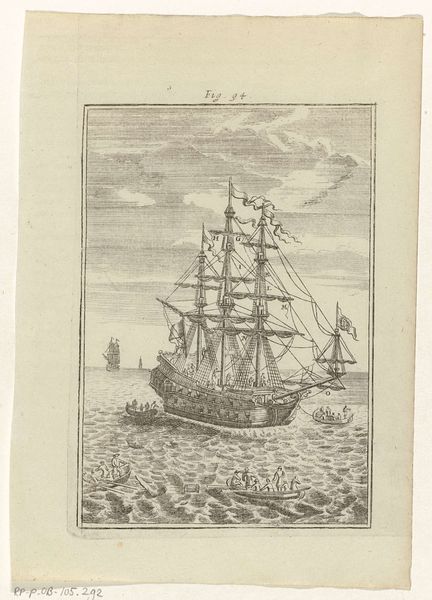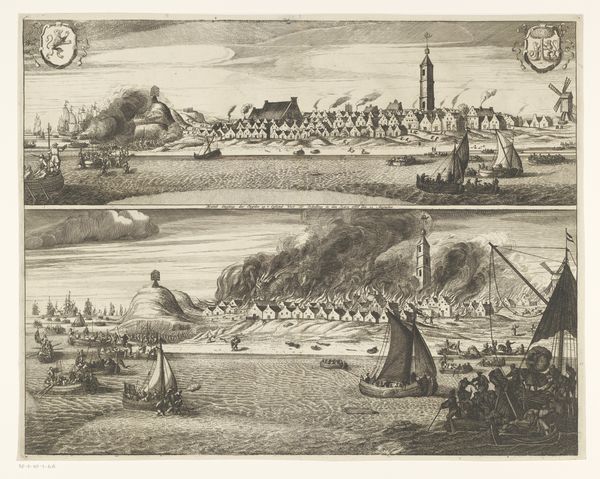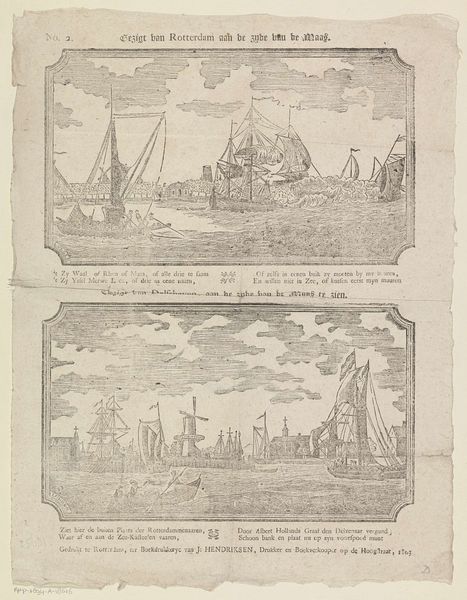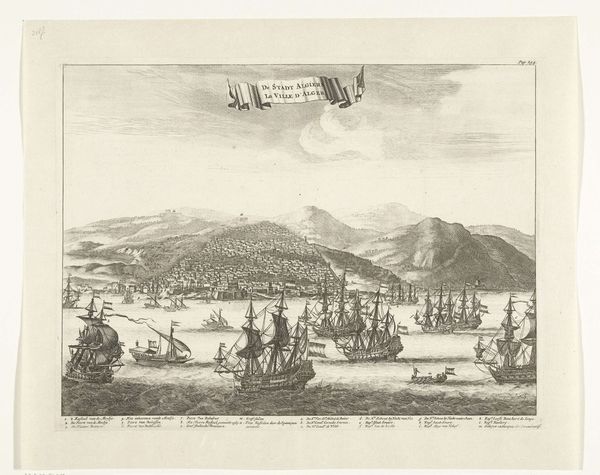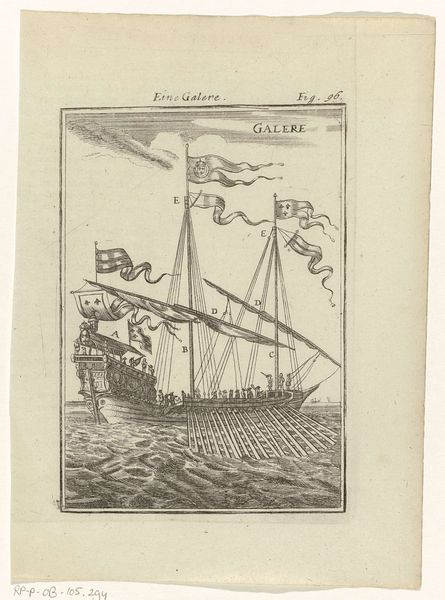
print, engraving
#
baroque
# print
#
old engraving style
#
landscape
#
orientalism
#
cityscape
#
engraving
Dimensions: height 198 mm, width 141 mm
Copyright: Rijks Museum: Open Domain
Editor: This is an engraving from 1719 titled "Aziatische en Afrikaanse schepen," or "Asian and African Ships," by an anonymous artist. The composition, with all the different boats on the water, has an orderly feel, but it also feels…detached, almost like the ships are specimens. What do you see in this print? Curator: Well, I see a visual representation of early global trade and, perhaps more critically, European perspectives on that trade. This print participates in a larger historical narrative called "Orientalism," where the "Orient," the East, is constructed through a European lens, often with stereotypes and power imbalances embedded within. Editor: Orientalism? Is that like, exoticizing other cultures? Curator: Exactly. Notice the level of detail given to the European-style ships in the foreground compared to the other vessels. Doesn’t it suggest a hierarchy? Who do you think the intended audience for this print was? Editor: Probably Europeans? And seeing their ships so prominently displayed might have reinforced a sense of dominance? Curator: Precisely! This print isn’t just about documenting different ship types; it’s subtly asserting a worldview. The very act of categorizing these "Asian and African" ships contributes to an "us" versus "them" mentality. It presents these cultures as "other," something to be observed and, perhaps, controlled. It also seems to imply a universal desire for ‘things,’ or access to travel. Editor: So, it’s not just a picture of boats, it’s a statement about power and perception. I'll never look at historical images the same way again. Curator: And that’s the point! Art is rarely neutral. Understanding its context helps us to understand ourselves.
Comments
No comments
Be the first to comment and join the conversation on the ultimate creative platform.
